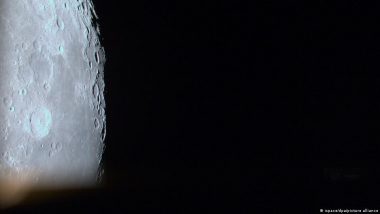Japanese firm ispace has assumed that its lunar lander failed to land on the moon, a company official said after losing contact with the spacecraft. The company plans to set up a permanent lunar colony by 2040.Japanese firm ispace lost contact with a a space craft it had planned to send to the moon on Tuesday.
Also Read | Uttar Pradesh CM Yogi Adityanath Seeks Details of Vacant Posts in State SIT.
"We have not confirmed communication with the lander," a company official said around 25 minutes after the planned landing.
"We have to assume that we could not complete the landing on the lunar surface," he said.
Only the United States, China and the former Soviet Union have managed to acheive the soft landing of spacecraft on the moon. Recent attempts by India and Israeli firm SpaceIL ended in failure.
The firm's founder and CEO, Takeshi Hakamada, said the mission lays "the groundwork for unleashing the Moon's potential and transforming it into a robust and vibrant economic system."
What do we know about the mission?
The Hakuto-R Mission 1 (M1) spacecraft was scheduled to land around 1:40 pm Japan time (1650 UTC/GMT).
The lander took off from Cape Canaveral, Florida, on a Space X rocket in December.
The M1 is 2.3 meters (7.55 feet) tall and was moving at nearly 6,000 kilometers (62 miles) per hour, ispace Chief Technology Officer Ryo Ujiie said at a media briefing on Monday.
Before attempting to land, it was in the moon's orbit traveling at some 100 kilometers per hour (3,700 miles per hour).
The M1 was to adjust its speed and altitude to make a "soft landing" on the moon. Ujiie said that slowing down the lander's speed was like "stepping on the brakes on a running bicycle at the edge of a ski jumping hill."
The M1 is carrying a number of rovers, including the United Arab Emirates' four-wheeled "Rashid."
"What we have accomplished so far is already a great achievement, and we are already applying lessons learned from this flight to our future missions," ispace's CEO said.
"The stage is set. I am looking forward to witnessing this historic day, marking the beginning of a new era of commercial lunar missions," Hakamada declared.
Other moon landing missions
Ispace is set to work with US space lab Draper to bring NASA payloads to the moon starting in 2025. The teams aim to build a permanent lunar colony by 2040.
The company believes the Moon will support a population of 1,000 people by 2040. It says 10,000 more people could visit each year.
It has scheduled a second mission for 2024, in which it plans to deploy its own rover.
Tokyo aims to send Japanese astronauts to the moon by the late 2030s.
Last month, Japan Aerospace Exploration Agency (JAXA)'s new medium-lift H3 rocket was forced to self-destruct after it reached space.
In October, JAXA's solid-fuel Epsilon rocket failed after launch.
sdi/jcg (Reuters, AFP, AP)
(The above story first appeared on LatestLY on Apr 25, 2023 11:50 PM IST. For more news and updates on politics, world, sports, entertainment and lifestyle, log on to our website latestly.com).













 Quickly
Quickly





















